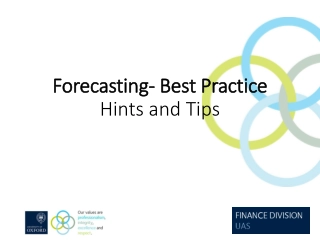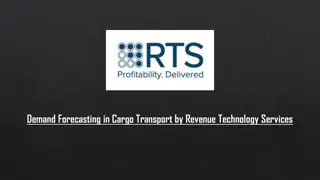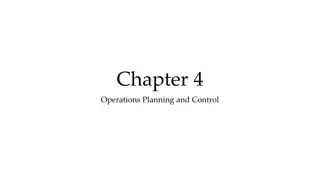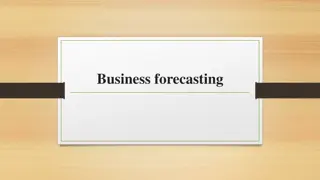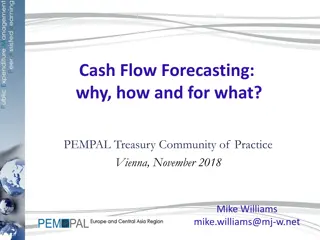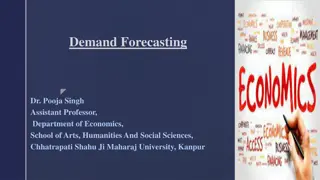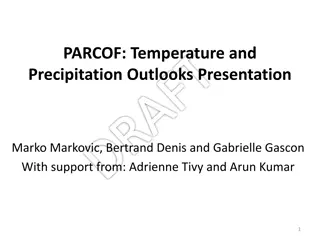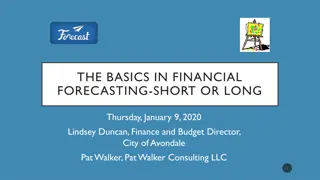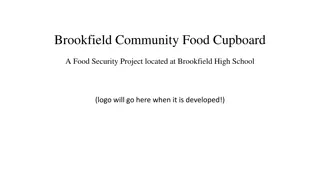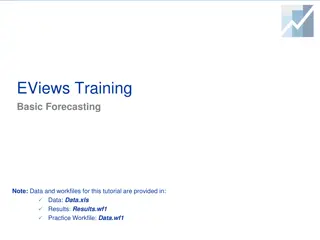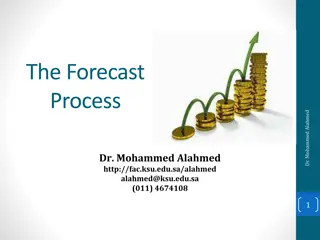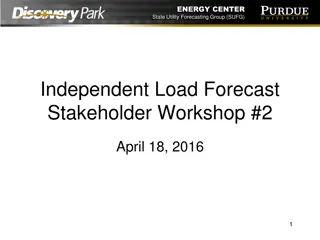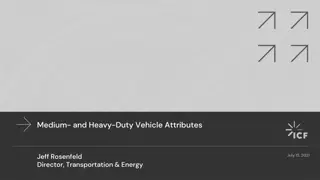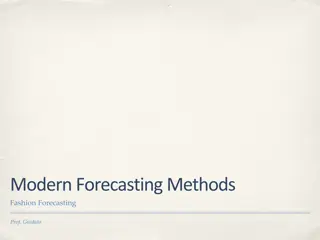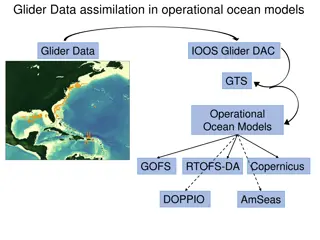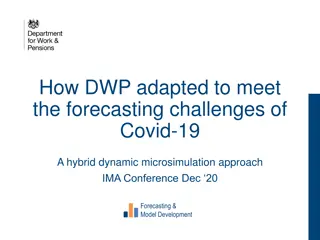Implementation Plan for Food Security Forecasting Model in AFSIS Project
This project led by Shoji Kimura aims to promote food security through the development of a forecasting model within the ASEAN Food Security Information System (AFSIS). The plan involves creating supply and demand forecasting information, training on forecasting methods, developing the F Model, and improving the AFSIS database. The activities span over the period of 2013-2015 with a focus on standardization and conformity assessment for mutual benefits among member countries.
Download Presentation

Please find below an Image/Link to download the presentation.
The content on the website is provided AS IS for your information and personal use only. It may not be sold, licensed, or shared on other websites without obtaining consent from the author.If you encounter any issues during the download, it is possible that the publisher has removed the file from their server.
You are allowed to download the files provided on this website for personal or commercial use, subject to the condition that they are used lawfully. All files are the property of their respective owners.
The content on the website is provided AS IS for your information and personal use only. It may not be sold, licensed, or shared on other websites without obtaining consent from the author.
E N D
Presentation Transcript
Implementation Plan for Food Implementation Plan for Food Security Forecasting Forecasting Model (F Model) Information in AFSIS Model (F Model) Information in AFSIS Security Shoji KIMURA Expert of ASEAN Food Security Information System (AFSIS) Project 1
1. 1. Purpose Purpose Desires field of standardization and conformity assessment on the basis of equality and mutual benefits. Desires to promote the Food Security Forecasting Model, in the Recognizing partnership and support friendly relationships between member countries. Recognizing that such cooperation shall promote economic 2
2. 2. Period Period 2013 - 2015 3
3. Activity 3. Activity 3-1. To create the mid-long term supply and demand forecasting information. 3-2. To broaden the necessary data for creating mid-long term supply and demand forecasting information. 4
3. Activity (2) 3. Activity (2) 3.1 3.1.1 [first year] Understanding and learning forecasting method Training [Second year] Learning the forecasting model and creating supply and demand forecasting information using F Model Training [Third year] Creating and Analyzing supply and demand forecasting information Training Creating supply and demand forecasting information Learning and creating 3.1.1 Learning and creating Homework Workshop (presentation) Homework Workshop (presentation) Homework Workshop (presentation) 5
3. Activity (3) 3. Activity (3) 3-1 Creating supply and demand forecasting information 3 3- -1 1- -2 2 [First year] Developing F Model Developing F Model Developing F Model Developing by Japan International Research Center for Agricultural Sciences (JIRCAS) 6
3. Activity (4) 3. Activity (4) 3-2 3 3- -2 2- -1 1 Broadening necessary data Guideline for collecting data for F Model Guideline for collecting data for F Model [First year Second year] Collecting the data based on guideline 3 3- -2 2- -2 2 Collecting the data based on guideline [First year Third year] 3 3- -2 2- -3 3 Improving AFSIS Database [Third year] Improving AFSIS Database 7
4. Activity Schedule 4. Activity Schedule [First year Jan [First year] ] Feb Mar Apr May Jun Jul Aug Sep Oct Nov Dec Investigating meeting Workshop Training Workshop A F S I S Developing F Model (JIRCAS) Guideline for data (draft) Guideline for rice Guideline for other crops M E M B E R Homework Creating forecasting information using regression formula C O U N T R I E S Forecasting report 8 Examine guideline Data
4.Activity Schedule (2) 4.Activity Schedule (2) [Second year] [Second year] Jan Feb Mar Apr May Jun Jul Aug Sep Oct Nov Dec Training Workshop A F S I S F Model review (JIRCAS) F Model parameter (JIRCAS) Guideline for meats Improving statistical method (Supporting for target countries) M E M B E R Homework Creating forecasting information using F Model Extending target C O U N T R I E commodities Forecasting report 9
4. Activity Schedule (3) 4. Activity Schedule (3) [Third year] [Third year] Jan Feb Mar Apr Jun Jul Aug Sep Oct Nov Dec Ma y Training Workshop A F S I S F Model parameter review (JIRCAS) Improving Database Announcement of Forecasting Information in ASEAN Improving statistical method (Supporting for Target countries) M E M B E R Homework Providing new data to AFSIS C O U N T R Creating forecasting information using model (reflecting agricultural policy) 10 Forecasting report
Comparison of Present database and New database No . Item . No . No . No No . No . Item Item Item Item Item Chicken meat import value total 1 Paddy harvested area 44Cassava exports quantity Sugarcane exports quantity 46Soybean exports quantity 47Paddy imports value 48Maize imports value 49Cassava imports value 50Sugarcane imports value 51Soybean imports value 5 Soybean seed 128Soybean processing use 170Beef meat domestic supply 212 2 Maize harvested area 3 Cassava harvested area 4 Sugarcane harvested area 5 Soybean harvested area 6 Paddy planted area 7 Maize planted area 8 Cassava planted area 87 Paddy waste 88 Maize waste 89 Cassava waste 90 Sugarcane waste 91 Soybean waste 92 Population domain 93 Domestic Consumption Number and area of agricultural holdings 129Rice other use 130Maize other use 131Cassava other use 132Sugarcane other use 133Soybean other use 134Rice beginning stocks 135Maize beginning stocks 171Buffalo meat domestic supply 172Pork meat domestic supply 173Chicken meat domestic supply 215GDP, nominal 174Beef meat food use 175Buffalo meat food use 176Pork meat food use 177Chicken meat food use 213Population 214GDP, real 45 216GDP, nominal (USD) 217GDP deflator 218CPI 219 9 Sugarcane planted area 52Paddy exports value 136Cassava beginning stocks 178Beef meat food use per capita Buffalo meat food use per capita 180Pork fmeat ood use per capita Chicken meat fooduse per capita 182Beef meat other use 183Buffalo meat other use 184Pork meat other use 185Chicken meat other use 186Beef stock change 187Buffalo meat stock change 188Pork stock change 189Chicken meat stock change 190Beef meat beginning stocks 191Buffalo meat beginning stocks 192Chicken meat beginning stocks 234 193Beef meat ending stocks 194Buffalo meat ending stocks 195Pork meat ending stocks 196Chicken meat ending stocks 197Beef meat export quantity 198Buffalo meat export quantity 199Pork meat export quantity 200Chicken meat export quantity 94 220 11Soybean planted area 12Paddy production 53Maize exports value 54Cassava exports value 95 Labor Force of persons 96 Gross Domestic Product (GDP) 137Sugarcane beginning stocks 138Soybean beginning stocks 179 221 222 13Maize production 14Cassava production 15Sugarcane production 16Soybean production 17Paddy yield 18Maize yield 19Cassava yield 20Sugarcane yield 21Soybean yield 22Paddy farmgate price 23Maize farmgate price 24Cassava farmgate price 25Sugarcane farmgate price 26Soybean farmgate price 27Paddy crop calendar 28Maize crop calendar 28Cassava crop calendar 30Sugarcane crop calendar 31Soybean crop calendar 32Paddy cost of production 55Sugarcane exports value 56Soybean exports value 57Paddy imports 58Maize imports 59Cassava imports 60Sugarcane imports 61Soybean imports 62Paddy exports 63Maize exports 64Cassava exports 65Sugarcane exports 66Soybean exports 67Paddy stock changes 68Maize stock changes 69Cassava stock changes 70Sugarcane stock changes 112Rice, dry season yield 71Soybean stock changes 72Paddy domestic supply 73Maize domestic supply 74Cassava domestic supply 116Rice, milled production Sugarcane domestic supply 97 Per capita Gross Value Added (GVA) 139Rice ending stocks 98 Rice producer price 99 Maize producer price 100Cassava producer price 101Sugarcane producer price 102Soybean producer price 103Rice retail price 104Maize retail price 105Cassava retail price 106Sugarcane retail price 107Soybean retail price 108Rice, wet season harvested area 109Rice, dry season harvested area 110Rice, upland harvested area 111Rice, wet season yield 181 223 140Maize ending stocks 141Cassava ending stocks 142Sugarcane ending stocks 143Soybean ending stocks 144Pig producer price 145Cattle producer price 146Buffalo producer price 147Chicken producer price 148Beef producer price 149Buffalo meat production price 150Beef retail price 151Buffalo meat retail price 152Pork retail price 153Chicken retail price 154Cattle inventory number 155Buffalo total inventoy number 156Pig total inventory number 157Chicken total inventory number 158Cattle slaughtered number 224 225 226 227 228 229 230 231 232 233 235 236 237 238 113Rice, upland yield 114Rice, wet season production 115Rice, dry season production 239 240 241 242 33Maize cost of production 34Cassava cost of production 76Soybean domestic supply 118Maize food use Sugarcane cost of production 77Paddy feed use 36Soybean cost of production 78Maize feed use 117Rice food use 159Buffalo slaughtered number 160Pig slaughtered number 201Beef meat export value total 202Buffalo meat export value total 244 75 243 119Cassava food use 120Sugarcane food use 161Chicken slaughtered number 162Beef meat per slautered animal Buffalo meat per slaughtered animal 164Pork meat per slaughtered animall 206Buffalo meat import quantity Chicken meat per slaughtered animal Beef meat production 203Pork meat export value total 204Chicken meat export value total246 35 245 11 37Paddy imports quantity 38Maize imports quantity 79Cassava feed use 80Sugarcane feed use 121Soybean food use 122Rice food use per capita 205Beef meat import quantity 163 247 248 39Cassava imports quantity Sugarcane imports quantity 81Soybean feed use Paddy seed 123Maize food use per capita Cassava food use per capita 207Pork meat import quantity Chicken meat import quantity 165 249
5.Implementation Structure 5.Implementation Structure Project Manager Consultant FAO Other Institution Training Workshop Improving Database Developing F Model Broadening necessary data JIRCAS AFSIS Expert AFSIS Secretariat FP Member FP Member Training Workshop Trainees 12
6. Responsibilities of Member countries (1) 6. Responsibilities of Member countries (1) 6-1 Member countries collaborate in the implementation and development of forecasting information conducted in ASEAN Member States. 6-2 Member countries must prepare the working group for F Model activity. This working group consists of a chief (FP member) and two trainee staffs. 13
6. Responsibilities of Member countries (2) 6. Responsibilities of Member countries (2) 6-3 Trainees are requested as follows: Bachelor level of statistics, economics, agriculture or any related field. Have a basic knowledge of Regression technique Responsible for agriculture statistics Fluent in English, written and spoken is a must It must be less than 50 years 6-4 Trainee staffs have to work to the exercises that indicated by training after the training. 6-5 Member countries are requested to prepare the data according to the guideline for collecting data for F Model activity. 14
7. Continuity to obtain and tackle 7. Continuity to obtain and tackle To guarantee a prompt response and dissemination of acquired knowledge and information with the members of working group, pioneering participant of this training would be responsible to obtain and tackle the succeeding trainings to be conducted. Training certificate would be given to a trainee who complete the presentation in workshop by each year. 15
FAO TCPFP Workshop and the First AFSIS F Model Training Program Time July 9 Tue July 10 Wed Lecture and practice -Single equation model Testing Function type (Dr. Kusano, JIRCAS) July 11 Thu Lecture -Agricultural Economic Situation- (Dr. Aree Wiboonpongse) Chiang mai university July 12 Fri Lecture and practice -Single equation model- Elasticity Projection (Dr. Kusano, JIRCAS) July 13 Sat Presentation and discussion -Data definition for F Model (rice) (Mr. Kimura) (AFSIS F Model Training) Orienteering Opening session Presentation -Keynote lecture (Dr. Aprichart Pongsrihadulchai) -Implementation plan for F Model activity (Mr. Kimura) 9:00 10:30 11:00 12:30 Lecture and practice -Single equation model- Basic statistics Regression (Dr. Kusano, JIRCAS) Lecture -Fundamental regression- (Dr. Aree Wiboonpongse) Chiang mai university Lecture -Econometric Apply- (Dr. Aree Wiboonpongse) Chiang mai university Lecture and practice -Single equation model- Dummy and policy Further development (Dr. Kusano, JIRCAS) Homework for Trainee (Dr. Kusano, JIRCAS, Mr. Kimura) Closing session 13:30 15:00 15:30 17:00 16
Instructor (permanent) Dr. Eiichi Kusano Researcher with fixed term Japan International Research Center for Agricultural Sciences, Tsukuba, Japan Educational background: Name and place Years attended From 2005 Degrees Main subjects To Tokyo University of Agriculture and Technology, Tokyo, Japan 2008 Ph.D. (Doctor of Agriculture) Comprehensive development study on semi-arid area in China Study on surplus labor in China Rural development model study in Japan Ibaraki University, Ibaraki, Japan Ibaraki University, Ibaraki, Japan 2003 2005 Master of Agriculture 1999 2003 Bachelor of Agriculture 17
Instructor (non- permanent) Dr. Aree Wiboonpongse Professor Agricultural Economics and Extension, Faculty of Agriculture, Chiangmai University Educational background: Name and place Years attended Degrees University of Illinois , United States Of America Ph.D. (Agricultural Economics) 1981 The Australia National University, Australia M.S. (Agricultural Development Economics) 1977 Kasetsart University, Thailand B.A. (Cooperative Economics) 1969 18


